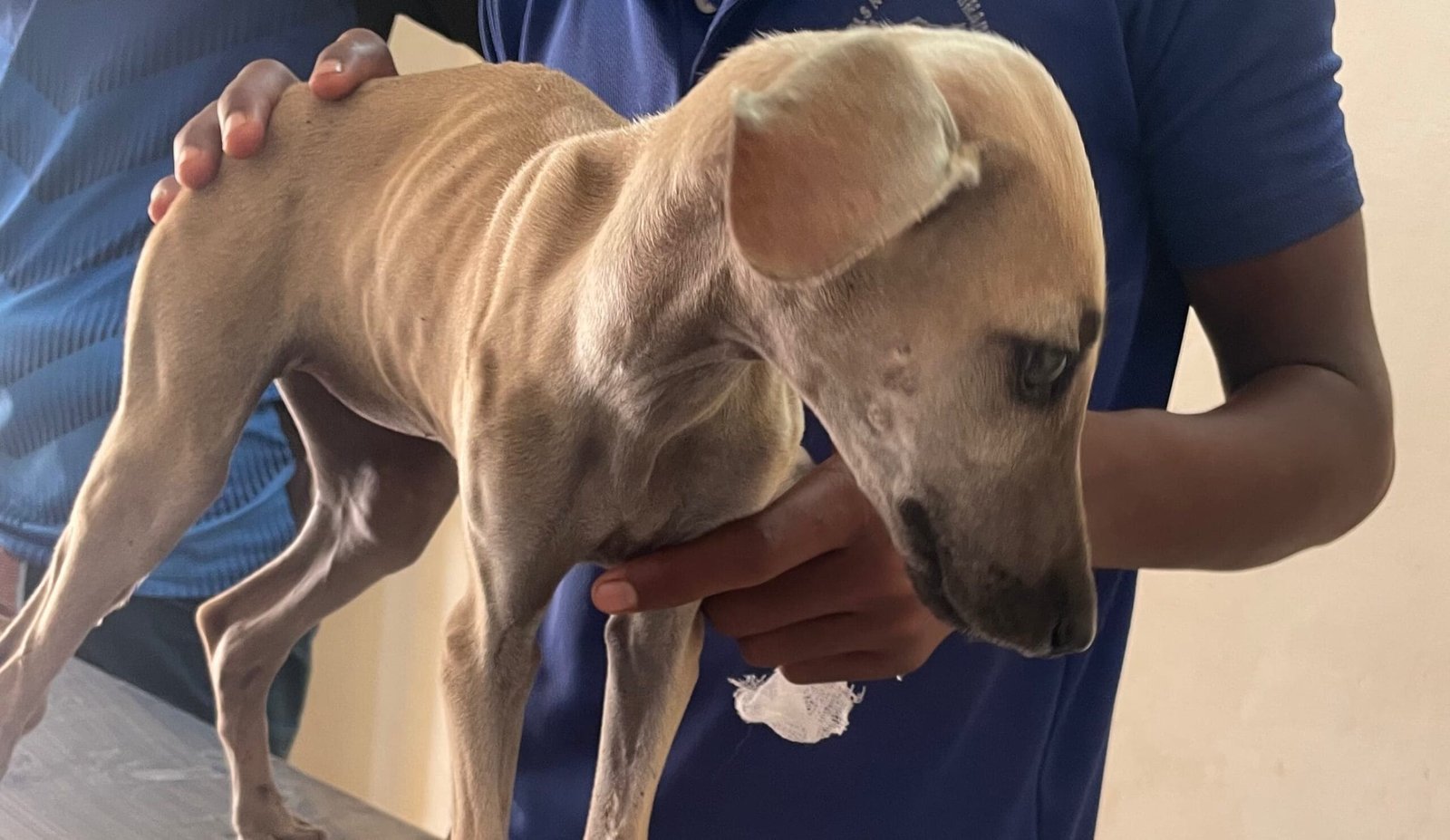TABLE OF CONTENTS
Hypothyroidism in Dogs
Hypothyroidism in dogs is an endocrinopathy caused by decreased production of thyroid hormone.

Hypothyroidism in dogs is one of the more common canine endocrine disorders, but there is a tendency for it to be over diagnosed, and an understanding of the clinical signs and diagnostic tests is essential. The most common cause is immune-mediated destruction of the thyroid glands (lymphocytic thyroiditis), but it also occurs due to idiopathic atrophy of the glands. Neoplastic destruction, anti-thyroid drugs, and congenital defects can occasionally cause hypothyroidism.
Etiology
- Primary hypothyroidism, the most common form, results from destruction of the thyroid glands.
- Secondary hypothyroidism, caused by decreased thyroid stimulating hormone (TSH) release from the pituitary, has rarely been reported.
- Tertiary hypothyroidism, caused by hypothalamic dysfunction, has not been proven in dogs.
- Congenital hypothyroidism from thyroid peroxidase deficiency has been seen in rat terriers and toy fox terriers. Giant schnauzers also develop congenital hypothyroidism, probably from TSH or thyrotropin-releasing hormone (TRH) deficiency.
Pathophysiology
- Adult-onset hypothyroidism is typically caused by lymphocytic thyroiditis or idiopathic thyroid atrophy.
- Lymphocytic thyroiditis is characterized by infiltration of the thyroid gland by lymphocytes, plasma cells, and macrophages. Eventually, fibrous connective tissue replaces parenchyma.
- Idiopathic thyroid atrophy is characterized by thyroid parenchyma being replaced by adipose tissue.
- Fibrosis and inflammation are minimal.
- Idiopathic thyroid atrophy may be the result of thyroiditis.
- Thyroid carcinoma is a rare cause of hypothyroidism, which does not develop until at least 75% of the thyroid has been destroyed.
Systems affected
Because most cells in the body are affected by thyroid hormone, hypothyroidism can affect most organs. Common signs are related to the dermatologic system and decreased metabolic rate.
Epidemiology
Breed
- Golden retrievers, Doberman pinschers, and spaniels are predisposed.
- There may be regional differences.
- Multiple breeds are predisposed to lymphocytic thyroiditis and likely predisposed to hypothyroidism, but any breed may develop hypothyroidism.
Age and Range
- Mean age is 7 years (range is 0.5–15 years)
- Hypothyroidism secondary to lymphocytic thyroiditis appears to develop at a younger age than idiopathic thyroid atrophy.
Sex
- Spayed and neutered dogs are at increased risk compared with intact dogs.
Clinical Signs
Common metabolic signs include weight gain, lethargy, and weakness; cold intolerance or heat-seeking behaviour; and mental dullness.
Dermatologic changes are common:
- Alopecia, seborrhea, and pyoderma
- Bilaterally symmetric alopecia in areas of increased wear (eg, lateral thorax, tail)
- Slow regrowth of clipped hair
- Dry and brittle hair coat
- Hyperpigmentation, hyperkeratosis, myxedema, and otitis externa
- Increased incidence of pyoderma, folliculitis, generalized demodicosis, and Malassezia infections as a result of immunosuppression
Neurologic dysfunction is uncommon and resolves with levothyroxine supplementation. Peripheral neuropathy may result in exercise intolerance, ataxia, weakness, conscious proprioception deficits, and hyporeflexia.
- Recent studies suggest that abnormalities in the limbs are more related to muscle than nerve.
- Cranial nerve dysfunction (V, VII, VIII) and peripheral and central vestibular disease have been reported.
- Seizures are rare.
Other signs:
- Cardiac abnormalities (eg, weak apex beat, bradycardia) are uncommon.
- Reproductive abnormalities include periparturient mortality and lower birth weight in pups born to hypothyroid bitches, and inappropriate galactorrhea in females.
- Decreased fertility is not well documented in hypothyroid bitches. Decreased libido and fertility have been reported in males of other species;
- Ocular changes may include corneal lipid deposits, lipemia retinalis, uveitis, secondary glaucoma, and keratoconjunctivitis sicca.
- Laryngeal paralysis and megaesophagus have been reported
- Myxedema coma is very rare
Diagnosis
- Dermatologic abnormalities could be caused by HAC & alopecia X.
- Metabolic signs could be caused by many other disease processes.
Laboratory Findings
- CBC, serum biochemistry profile, and urinalysis are indicated to rule out other diseases before thyroid-specific tests are conducted.
- Mild non-regenerative anemia is common.
- Most hypothyroid dogs have fasting hypercholesterolemia and hypertriglyceridemia.
- Alkaline phosphatase (ALP) and alanine aminotransferase (ALT) may be slightly elevated.
Thyroid Specific Diagnostics
- Total T4 (tT4) concentration is a sensitive but nonspecific screening test; values are low in most patients. Additional testing (free T4 [fT4], TSH is recommended before diagnosing hypothyroidism.
- Euthyroid dogs may have low tT4 levels because of individual variation, non-thyroid illness, or drug administration.
- Measurement of fT4 by equilibrium dialysis is a more accurate indicator of thyroid function than tT4, as fT4 (not bound to proteins) is the active form.
- Measurement of T3 concentrations is less accurate than measurements of tT4 and fT4.
- TSH stimulation test evaluates thyroid reserve.
- TRH stimulation test is less straightforward, less reliable, andmore difficult to obtain than the TSH stimulation test.
Drug Interference with Thyroid Testing
- Several medications can affect thyroid hormone concentrations; these drugs (except sulfonamides) rarely cause clinical hypothyroidism but can interfere with test results.
- Glucocorticoids decrease tT4, fT4
- Phenobarbital can cause decreased tT4 and fT4 and slightly increased TSH
- Sulfonamides block T3 and T4
- Potassium bromide does not appear to affect thyroid function
- Aspirin decreases tT4 and fT4 concentrations
Imaging
Ultrasonography demonstrates decreased echogenicity and smaller than average (volume and cross sectional area) thyroid lobes in hypothyroid versus euthyroid dog.
Treament
- Oral levothyroxine supplementation is initiated at 0.02 mg/kg q12h. Dose may be based on surface area for larger dogs (0.5 mg/m2).
- Administration with food decreases bioavailability.
- The oral liquid formulation of levothyroxine has higher bioavailability than the pill formulations and can be administered q24h.

